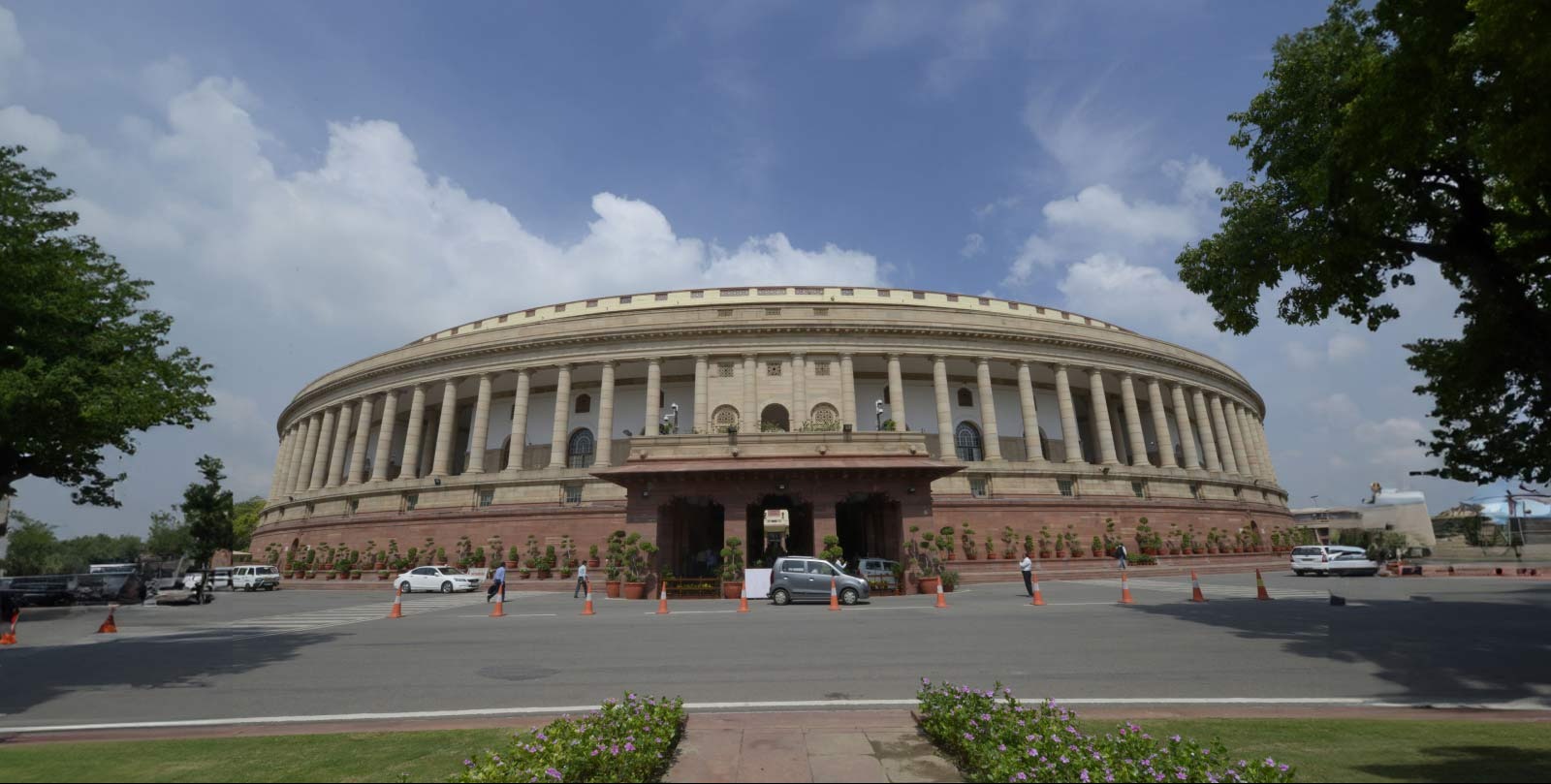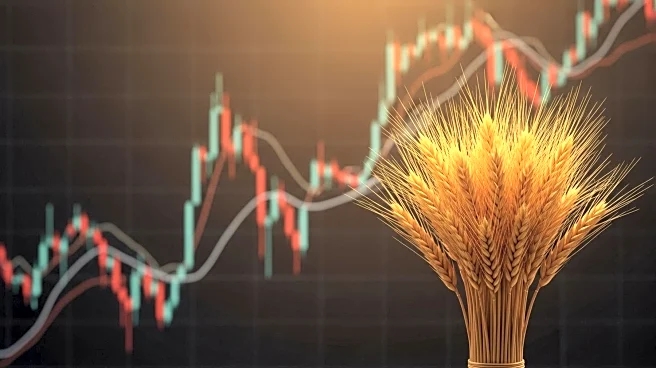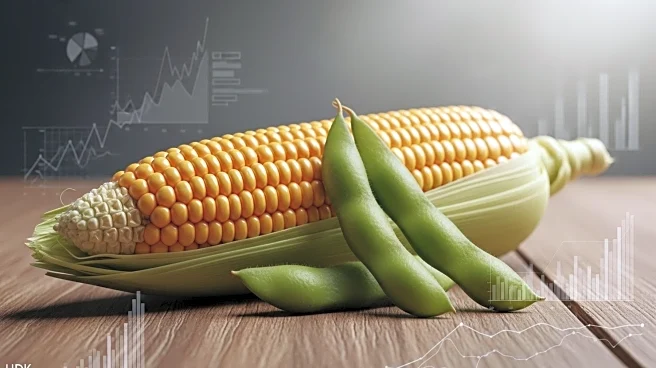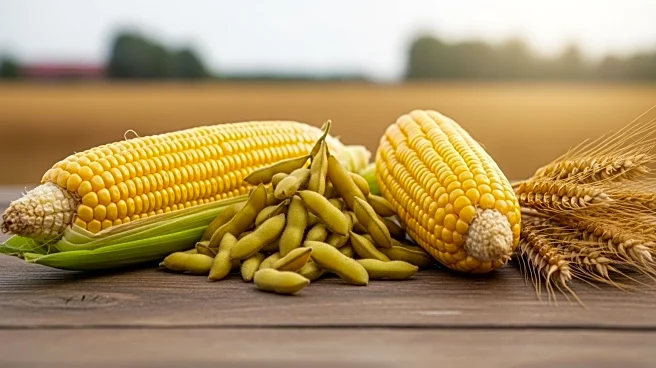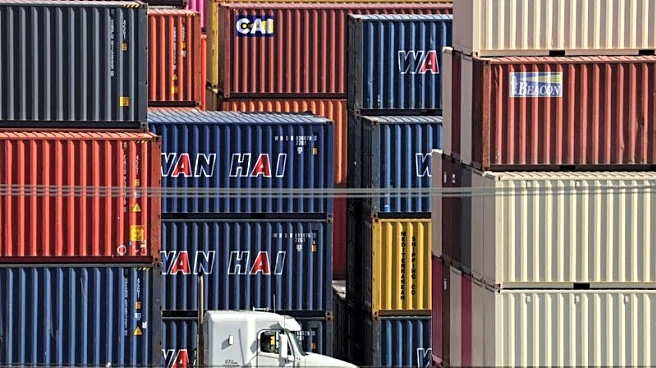What is the story about?
What's Happening?
Soybean futures are currently trading near $10.35, facing vulnerability due to a projected carryout of 290 million bushels, as estimated by the USDA's August WASDE report. This figure is down by 20 million bushels from the previous month, contrary to expectations of an increase. The record yield forecast of 53.6 bushels per acre may not materialize, potentially reducing carryout further and increasing prices. However, high yield, tariffs, and lack of trade with China could drive prices lower. Disease issues like sudden death syndrome and white mold, along with cooler-than-normal nights, may affect yields. The market is divided between bullish and bearish traders, each with valid arguments regarding price direction.
Why It's Important?
The soybean market's vulnerability has significant implications for farmers and traders, affecting decisions on marketing strategies. A drop in carryout below 200 million bushels could lead to higher futures prices, benefiting those who hold soybeans. Conversely, record-high yields and ample supply could result in lower prices, impacting profitability for producers. The market's uncertainty requires careful planning and risk management to navigate potential price fluctuations. The broader agricultural industry must consider these dynamics when making decisions about production, storage, and sales.
What's Next?
Farmers and traders are advised to approach soybean marketing with a balanced strategy, considering both bullish and bearish scenarios. Selling cash and retaining ownership through paper, or using futures and options, are potential strategies to mitigate risks. Purchasing put options can provide a price floor while allowing participation in price rallies. Stakeholders should consult with advisors to select appropriate tools based on risk tolerance and operational needs. The upcoming USDA report and weather conditions will be critical factors influencing future market movements.
AI Generated Content
Do you find this article useful?


